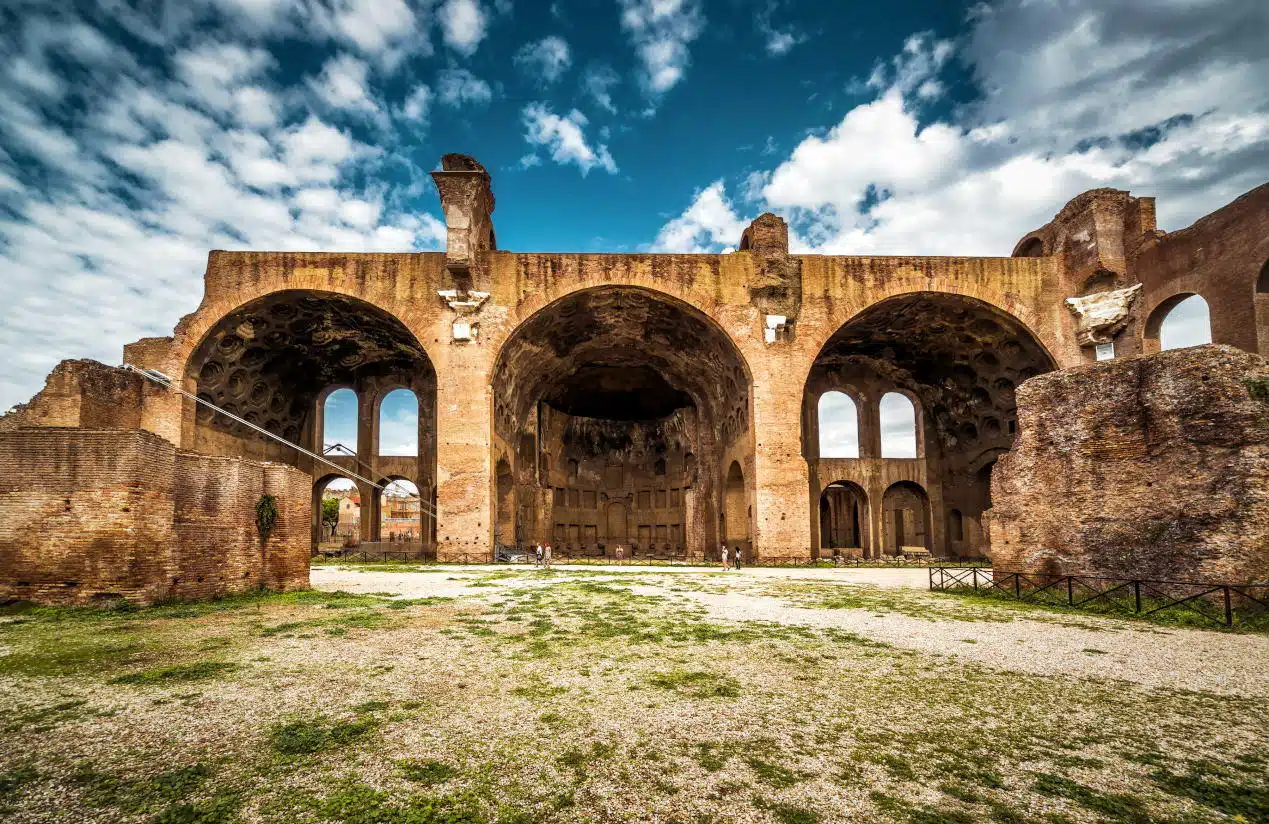Arch You Happy
- G
- Jun 28, 2024
- 6 min read
The eponymous arch has a long history, from ancient civilizations to seemingly every design project of the last few years. Recently, arches have become an epidemic; no house design is complete without one. Every DIY-er is fashioning arches in doorways, niches, and cabinets to fit in with the masses. Have I stated before how much I deplore trends?!
Alas, arches are not something we should run away from. They are essential to design vernacular. Think of a Spanish colonial home without an arch it is like pasta water without salt! Or think of a Moorish edifice without its complicated arch designs along the portico? Or gothic cathedrals without the towering pointed arches synonyms with their name. However, with all design trends, historical importance lies below the surface. Akin to wearing cerulean without understanding how many designers have paved the way for the colour to become “mainstream” - thank you, Miranda Priestly.
However, that blue (read: ARCH) represents millions of dollars of countless jobs (read: thousands of historical buildings), and it’s sort of comical how you think that you’ve made a choice that exempts you from the fashion (read: construction) industry when, in fact, you’re wearing a sweater (read: building a drywall arch in your home) that was selected for you by the people in this room… from a pile of “stuff.” (read: aka history) - Miranda Priestly
The history of the arch comes from construction requirements. A simple barrel arch - one where the curved portion of the arch is a perfect semi-circle - made Roman architecture and its kin possible. Without the incredible strength and efficiency of the barrel arch, no aqueduct could have been built and withstood the test of time. This arch elevated design and engineering from the post and beam construction of Ancient Greece (and Gobleki Tepe) before it. The open-height halls before the arch were limited to the slenderness ratio of the vertical columns (remember this for later). The Scandinavian engineers and architects found a way around this problem by creating elaborate stacked shapes of post and beam construction to build churches like the stave church Borgund.

The Romans used the arch widely in their buildings to create large grand spaces. See the Basilica of Maxentius and Constantine below. The Colosseum is another fine example of how the arch allowed for construction of taller walls. This is not to say that the Romans necessarily “invented” the arch. I firmly believe that we do not know our “true” history as it is still being uncovered. However, the Romans used the arch throughout their empire, from common buildings to infrastructure to dwellings.
From the glorious Roman Colosseum to a DIY-er's kitchen archway the road of the arch is well paved and worn. I began noticing the trend of arches popping up in design years ago followed, inevitably, by the folks who live in our phones in every home renovation from Fort Lauderdale to Melbourne. What percentage of thin drywall sales at Home Depot were attributed to the great arch trend of the 2020's?
The story of the arch is ancient, let us discuss the varieties and their history so we can appreciate this beautiful design feature for its true significance.
The Barrel Arch
As noted above, this is most commonly attributed to the Romans. Byzantine architecture also commonly used this design feature for strength and beauty when creating their large churches and public buildings. Ostensibly the barrel arch is the "strongest" arch due to its half circular shape. Weight applied to the top of the arch is evenly distributed to the "legs" of the arch. This style is often referred to having the "keystone" or centre portion of the arch that holds its shape.
In more modern applications a barrel arch is commonly used in Spanish Colonial style architecture. The living room by Clements Design in Kendall Jenner's Spanish Colonial home is an excellent example. The arch mirrored along the one wall and the large steel windows.
The elegant barrel arches of the Casona Sforza shine along the beaches of Puerto Escondido. This project, designed by Alberto Kalach is a testament to the history of the Roman and Byzantine buildings before it. The use of exposed local bricks show the elegance and simplicity of masonry. The curved ceilings provide an open, almost cave-like feeling inside the rooms that all open to views of the Pacific Ocean. This project is a gorgeous example of applying historical design vernacular that fits within its environment.
The Gothic Arch
The eponymous gothic arch first arrived on the design scene in the 12th century and its reign extended until the 16th century when it fell out of fashion. The notion of gothic in general is one of darkness and macabre, in my humble opinion gothic cathedrals were the antithesis. They were purposely designed to fill the interior spaces with light and a feeling of grandeur . In speaking with my engineering and construction colleagues it is generally agreed upon that we do not have the skills, resources, design acumen, and general abilities to construct cathedrals like these in our current age. We have lost the beauty of pure design genius in a way.
The term gothic is derived from the Goths, a Germanic tribe that fought for supremacy in Europe against the failing Roman Empire. Although, the Goths themselves were not known for their architectural prowess, their name was applied to the cathedrals built across Europe with the rise of Catholicism that followed after the fall of the Romans. The Romanesque ways of construction used arches, as noted above, but these were typically anchored with large stone mass walls and construction. Note how thick the walls between the arches are at the Basilica of Maxentius and Constantine. The fenestrations of the back-wall brought light interior spaces though they were limited where these could be placed in order to maintain the strength of the structure. Cue the majesty of gothic architecture. The invention of flying buttresses revolutionized construction techniques unmatched to this day. By creating supporting structures outside of the building, the resulting interior spaces are enormous. and filled with light.

The pointed arch that is synonymous with gothic architecture reduced the stress applied to the legs of the arch, thereby allowing the vertical members to be taller without mid-span supports. The pointed arch was inspired by Moorish architecture.
In my mind there is no greater example of gothic architecture than the Cologne Cathedral in Cologne Germany. The entry alone is a shining example of the true craftsmanship, artistry, and heavenly detailing found in cathedrals across Europe. Note the use of the flower shape, this motif is used throughout gothic architecture in various forms. Cross sections of the columns inside the churches are typically a multiple petal leaf, sometimes three or more petals.
The Moorish Arch
Moorish architecture is a sub-sect of Islamic architecture. The Moors were a group from North Africa who settled (conquered) in the southern parts of Europe, namely the Iberian Peninsula of Spain and Portugal. You can find examples of Moorish architecture throughout these countries. Notably in Cordoba, Granada, and Cadiz. The Moorish arch is often referred to as a "horseshoe arch" as the shape of the curved portion is more than a half circle as you can see in the example below from the Alcazaba in Malaga, Spain.
The shape of the arched portion within Moorish architecture varies from building to building as well as where the arch is used within a building. The Great Mosque in Cordoba, for example, has a series of striped arches that are more reminiscent of barrel arches. The commonality that separates the Moorish style from other arches is the use of a capital at the base of the curved portion of the arch at the top of the "legs" - this allows the vertical columns supporting the arches to be slimmer which creates a stunning architectural effect.
Similar to the flower petal motif used throughout Gothic architecture, the Moors used a similar pattern throughout their buildings. Instead of using the petals to as the cross sectional shape of columns, the Moors used it beautifully to decorate the interior curve of arches, see below. This carved look gives the arches and subsequent relief a lace-like appearance which softens the space. Also, a key element is how the petal shapes reflect on the floors and adjacent walls as the shadows move across them.
As mentioned in this post, my visit to the Alhambra in Granada, Spain, was a truly transformative experience. Approaching the castle it appears to be a sturdy fortress sealed from the outside world, but upon entering the gorgeous courtyards lined with intricately carved arches feels almost magical. There is a softness to the design, as it flows from exterior courtyards to interior hallways and rooms, the lace-like carving covering the stone surfaces.
The artistry is in the craftsmanship to construct these arches. Not to continually knock the DIY-ers, but let us pause and reflect on the skills we once had. Let us consider how we can work back to that, allow the passion of craftsmanship and pride in our buildings to seep back into our society. Learn and study how stonemasons, builders, and architects created physical spaces. Be inspired and purposely integrate design elements instead of copy-catting your way to viral arch fame. To look forward we must learn from our past.
-G






















Comments